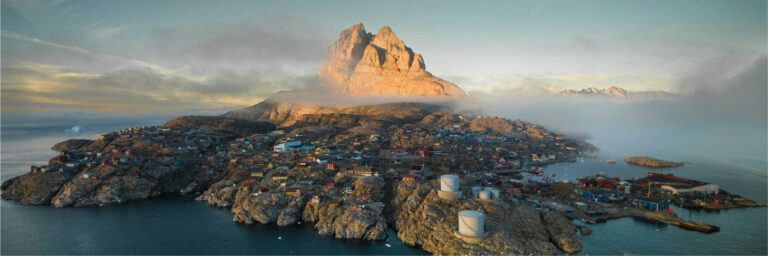4 Patterns Linking Languages and Vanishing Landscapes
Glaciers keep melting, forests keep burning, and the message is clear: climate change isn’t coming, it’s here. But there’s another, quieter loss happening alongside the environmental damage: languages tied to these disappearing landscapes are vanishing too. Over the past year, as we’ve collected Global Perspectives to better understand the world, we’ve traced four critical patterns linking environmental collapse and cultural loss across the globe. From Peru to Greenland, here’s what the world is losing, and why.

Anthropogenic Exploitation and Displacement
Peru
Peru’s Amazon covers 60% of the country’s land but is home to just 5% of its population. Its cultural richness is remarkable: 48 of Peru’s 106 surviving languages are spoken here. Yet 647 Indigenous communities remain invisible in official records (Mongabay). Their unmapped territories appear “empty” to the state—a dangerous oversight that invites extractive industries.
Read more
Migration and Demographic Patterns
New Zealand
In a country where ships outnumber people, keeping indigenous tongues alive is a demographic puzzle. With 78% of the land empty (New Zealand Harold), most New Zealanders cluster in the North Island’s cities—a shift driven by coastal erosion, storms, and climate-vulnerable agriculture. This rapid urbanization is fueled by Asian migration—now 28% of Auckland—reshaping cities and creating a tension between indigenous identity languages and the utilitarian lingua francas needed for multicultural cohesion.
Read more
Climate change-related Disasters
Indonesia
With its 17,000 islands, the distinction as Southeast Asia’s largest economy, and a population of 280 million, Indonesia is a true global heavyweight—boasting extraordinary biodiversity alongside one of the world’s richest linguistic tapestries. Yet its location on the Pacific “Ring of Fire” places it in perpetual jeopardy from climate‑related calamities.
Read more
Global Warming and Shifting Landscapes
Greenland
Some places on Earth feel global warming more intensely—and the Arctic tops the list, warming at nearly four times the global average. Greenland, ground zero of this shift, has seen its average temperature climb by 2.7 °C (Grantham Institute), turning frozen plains into exposed rock and slushy waterways. This thaw unlocks mineral wealth—nickel, rare earths, and oil once locked beneath permafrost—and opens shipping lanes that were choked by pack ice. Yet for Greenland’s people, these so‑called “gains” come at a steep cost: 78% report that thawing disrupts not just their landscape but their entire way of life, from seasonal hunting routes to the very words they use.
Read more